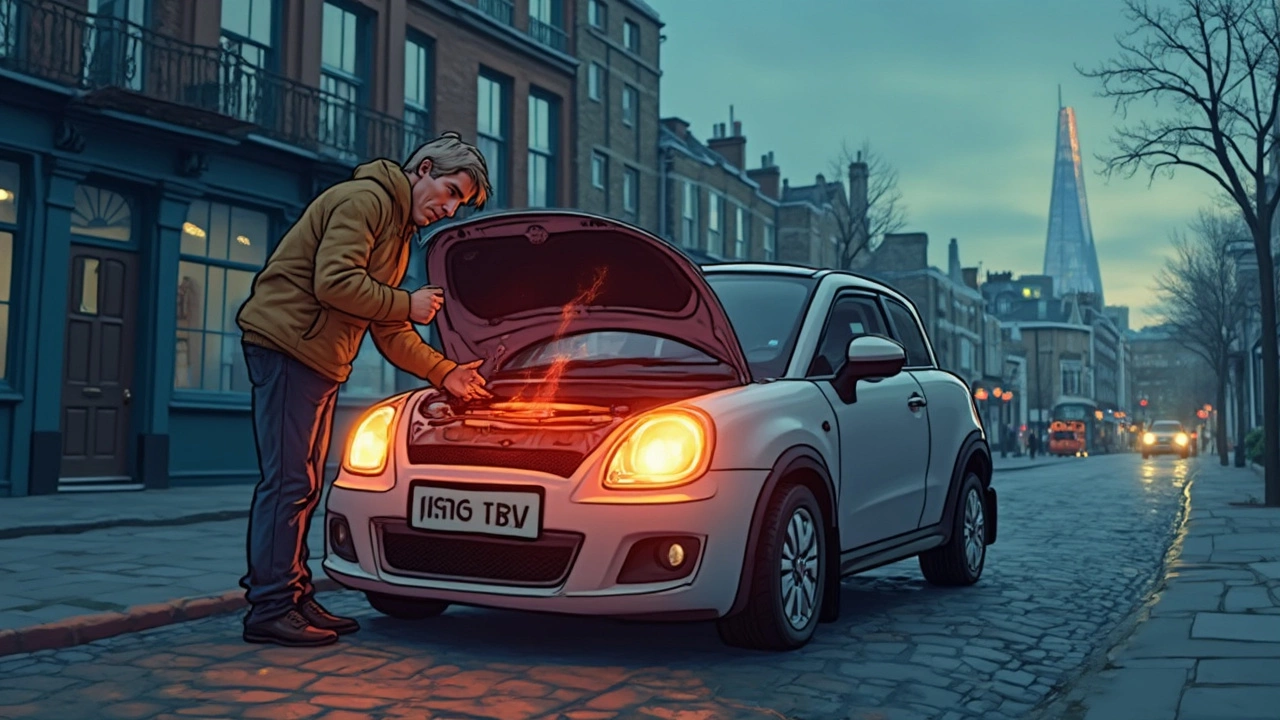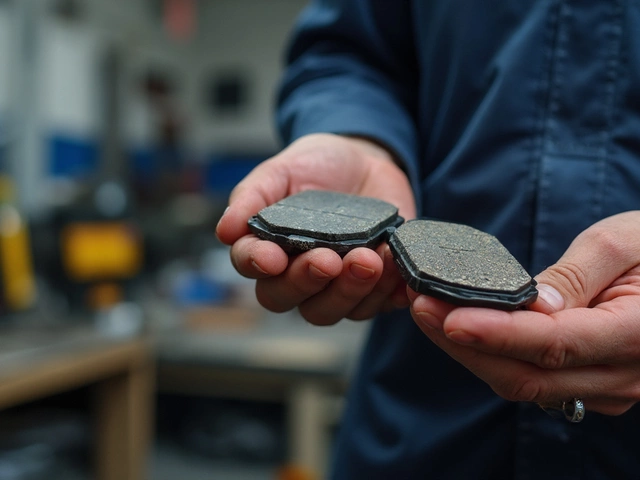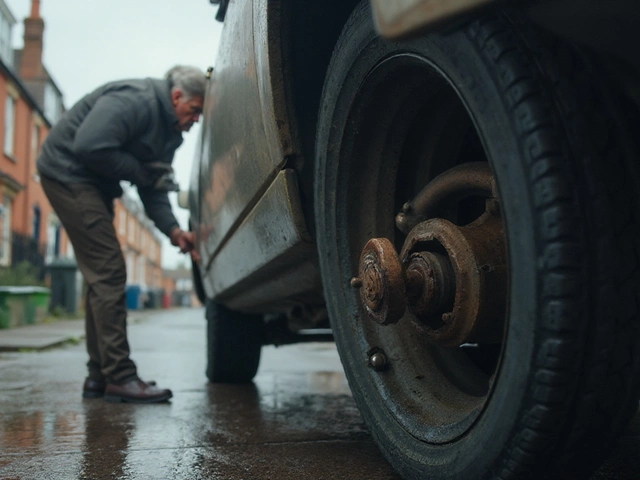Ask any mechanic—running low on engine oil is like skipping water for days. The metal inside your engine is moving fast, and without enough oil, things heat up and grind down fast. There isn’t a polite way to put this: not checking your oil can flat-out kill your engine.
Most of us put off oil checks, thinking the dashboard will warn us. But did you know the oil pressure light sometimes pops up only after real damage starts? You won’t always see smoke or hear crazy sounds right away, so driving “just a bit more” can make a pricey mess.
If you want your car to last—without surprise breakdowns or explaining huge bills to your partner—knowing what actually happens when your engine runs low on oil can save you. It’s not just about topping it up now and then. There are key signs, risky myths, and easy tricks that make all the difference.
- Why Engines Need Oil
- Early Signs Your Oil is Low
- How Fast Can Damage Happen?
- What Breaks First When Oil is Low
- Weird Facts and Surprising Risks
- How to Prevent Engine Oil Problems
Why Engines Need Oil
Think of engine oil as the bodyguard for every moving part under your hood. Modern engines have dozens of metal parts zipping around at breakneck speed—some rub together thousands of times each minute. Without oil doing its job, that metal-on-metal action chews up parts fast and turns your money into scrap.
The main job of engine oil is pretty simple: lubricate and protect. Here’s what that really means:
- Lubrication: Oil makes a thin film between moving metal parts, so they don’t grind or heat up.
- Cooling: Besides coolant, oil carries heat away from super-hot spots, keeping things from warping or melting.
- Cleaning: Oil scoops up sludge, dirt, and tiny metal shavings so they don’t ruin the engine.
- Sealing: Oil helps seal the tiny gaps between pistons and cylinders, preventing power loss and weird noises.
- Rust and Corrosion Protection: Oil coats engine surfaces, blocking moisture and acid from causing rust.
You might guess that all this work puts engine oil through serious stress. The heat under an engine’s hood can easily hit 230 to 250°F (110 to 121°C) when you’re driving normally. And at those temps, oil breaks down way faster if you don’t use the right type or you go too long between changes. Here’s a peek at what oil is up against every mile:
| Engine Task | How Oil Helps |
|---|---|
| Pistons moving up/down | Prevents wear, keeps motion smooth |
| Valves opening/closing | Reduces friction, cuts noise |
| Heat from combustion | Absorbs and carries away heat |
| Contaminants entering engine | Traps dirt, keeps parts clean |
Skipping a single oil change or letting it drop low doesn’t just risk your engine. It can mess up gas mileage, jack up repair costs, and sometimes even kill the turbo or catalytic converter. Bottom line: engine oil isn’t just for die-hard car geeks—it’s for anyone who depends on their car not letting them down.
Early Signs Your Oil is Low
You don’t need fancy diagnostic tools to spot low engine oil, just a bit of common sense and a watchful eye. Catching the problem early can save you thousands.
The first and most obvious sign is that pesky oil warning light on your dash. But don’t get too comfortable—a lot of engines won’t trigger that light until the oil level is dangerously low or pressure is already poor. That means relying only on that light can be a risky gamble, as damage might be happening before you even see it.
Listen for odd sounds coming from under the hood. If your engine sounds louder, knocks, or taps, chances are good that things aren’t getting enough lubrication. That noise is metal-on-metal action, and it’s never a good thing.
Pay attention to how your car is performing. If you notice loss of power—like your car feels sluggish, or is slow to respond—low engine oil could be a culprit. Engines struggle to work well without enough oil slicking the moving parts inside.
Another telltale sign: the smell of burnt oil or something hot. If you catch a burning, oily aroma while driving or after parking, check your dipstick right away. A hot smell can mean not enough oil is getting where it needs to go, and things are starting to cook.
Sometimes, your engine temperature gauge will sneak upward, especially if you’re driving in warm weather or stop-and-go traffic. Less oil means less cooling, so rising temps should never be ignored.
- Check your driveway or parking space for those wet, dark drips. Leaks might be stealing your oil even if you haven’t gone over the oil change interval.
- Pull out the dipstick once a month or before a road trip. It takes two minutes and can make all the difference.
If you notice any of the above signs, don’t just hope your car will “make it.” Add oil right away, and plan to get things checked if it keeps happening. Prevention is much cheaper than engine repairs—trust me, towing with two tired kids in the back is no one’s idea of a fun day.
How Fast Can Damage Happen?
It doesn’t take long at all for engine damage to start when oil is low. You might think you have miles and miles before you’re in trouble, but sometimes it’s just minutes. Once the oil drops below the safe level, parts inside start rubbing with nothing to protect them. In modern engines, things get hot and noisy ridiculously fast.
If your oil warning light flashes, that’s not a suggestion to drive another 20 miles. Some cars can suffer serious damage in as little as 30 seconds with zero oil pressure—especially high-revving or turbocharged engines. The moving surfaces lose that thin oil film, so friction ramps up. If you keep driving, the heat can warp your pistons or even seize the engine, which costs more to fix than most people want to think about.
Here are the quick stages of damage:
- Engine oil level drops below minimum. The oil pump sucks air, not oil.
- Metal parts start grinding together. You might hear tapping, knocking, or ticking.
- Parts heat up way faster than normal, risking a blown gasket, warped cylinder head, and melted bearings.
- If you keep going, parts can literally weld or fuse together—this is what mechanics call a “seized engine.”
Every engine is different, but most aren’t forgiving. Even mild damage from a short drive can shorten your engine’s life and tank resale value. So if that oil light comes on, shut the engine off as soon as possible and check the level before moving an inch further.

What Breaks First When Oil is Low
The first thing at risk when your engine oil dips too low is the tiny film of oil that shields moving parts from direct metal-to-metal contact. Take that away, and damage happens fast. Here’s what usually gets hit first, based on what actually happens inside your engine:
- Engine bearings: These are like cushions between your crankshaft and engine block. No oil means they overheat and wear out. Sometimes, damage can start within minutes of running dry.
- Piston rings and cylinder walls: These need oil to slide smoothly. Low oil lets them scrape and score each other, burning more oil and losing power.
- Camshaft and lifters: These control your engine valves. Without lubrication, they wear down strangely fast and that ruins how your engine "breathes."
- Turbochargers (if you have one): Turbos spin insanely fast and are especially sensitive to low oil. Just a short period of low oil will cook the bearings and seriously wreck the turbo.
If you’re wondering how quickly all this can go wrong, a real-world test by an auto research group found that some engines totally seized in only 15 minutes without oil. It isn’t an urban legend—engines run out of grace period fast.
| Component | Failure Risk (Minutes Without Oil) |
|---|---|
| Engine Bearings | 5-15 |
| Piston Rings/Cylinder Walls | 10-20 |
| Camshaft/Lifters | 8-20 |
| Turbocharger | 2-7 |
You don’t need to see oil puddles or weird smoke to have big trouble either. Even a little less oil than needed ramps up wear, especially on those bearings and high-friction parts. It can also mess with engine oil pressure, triggering those dashboard warnings—but by then, you’re on borrowed time.
If you hear a knocking sound, ticking, or your check engine light blinks with no warning, it could mean a bearing is already in trouble. At that point, topping up the oil won’t undo the wear. Prevention is way cheaper than any fix you’ll face if you wait too long.
Weird Facts and Surprising Risks
Here’s a kicker: most folks think running low on oil means you’ll burn up the engine right away, but some engines keep going for miles—right until they suddenly quit for good. This false sense of security is a big reason people ignore the warning signs.
Back in 2015, AAA pulled apart hundreds of failed engines and found that almost 45% of them died early because of poor oil maintenance or low oil. Not old age, but simple neglect. That’s not even rare—it’s super common.
Surprising fact: luxury cars aren’t immune. In fact, high-performance engines (think turbocharged or European cars) are sometimes even more at risk because they run hotter and tighter. If you drive an older car with a small oil pan, you’re at even higher risk since there’s less oil to lose before trouble starts.
Here’s a quick look at what can happen faster than you’d expect if you go low on engine oil:
- Sudden engine seizure: Some engines freeze up within just a couple miles without oil, with zero warning.
- Wrecked turbochargers: Turbos spin at over 150,000 RPM. They basically cook themselves in seconds if oil runs dry—even just a short trip can do it.
- Failed sensors and electronics: The heat caused by low oil can fry sensors and wiring near the engine block—not just greasy metal parts.
Want to see how long a car can go with low or no oil? Check out this fun table based on real test data and mechanic reports:
| Scenario | Miles Until Engine Damage |
|---|---|
| Oil barely below minimum | 500–2,000 |
| Oil halfway gone | 50–500 |
| No oil at all | 2–15 |
One more thing nobody expects: if you have a hybrid or a start-stop system, running low on oil messes with those fancy features first. The car might stall or throw confusing error messages, making it hard to even know the real problem is oil.
So yeah, oil isn’t just for the engine’s insides. It saves your sensors, your electronics, and all the other stuff you’d never guess were tied to a simple oil check.
How to Prevent Engine Oil Problems
If you want to avoid costly engine problems, keeping up with oil checks is key. Think of your car’s engine like your kid’s favorite bike—if you never clean or lube the chain, it’s going to seize up faster than you think. The good news? Preventing low oil issues isn’t rocket science.
- Check your engine oil at least once a month, especially before long trips. Pop the hood, wipe the dipstick, and make sure the level falls between the marks.
- Stick to the oil change schedule in your owner’s manual. Most cars today need an oil change every 5,000 to 7,500 miles, but some engines (if you have a turbo, for example) are thirstier and need it sooner.
- Fix leaks ASAP. If you spot dark, greasy patches under your car or smell burnt oil, don’t shrug it off. Small drips can turn into a real headache.
- Use the oil type the manufacturer recommends. Don’t just grab any bottle on sale – the wrong oil thickens, thins, or doesn’t protect as it should.
- Keep an eye on your dashboard. The oil light is not just a suggestion; it’s a warning that can mean zero oil pressure or very low oil.
- Listen for weird noises—clicking, tapping, or knocking sounds after start-up can mean your engine is begging for oil.
Ever wonder how often engines fail due to oil neglect? Check this out. AAA did a poll in 2022 and found that about one in five drivers admitted to going over a year without an oil change. And engine failures linked to no oil tripled between 2019 and 2023. That’s not rare—it’s a disaster waiting to happen.
| Common Prevention | Time/Distance | Why It Matters |
|---|---|---|
| Oil check | Monthly | Finds leaks and low oil before damage starts |
| Oil change | Every 5,000–7,500 miles | Keeps oil clean and effective |
| Listen for knock/tap | With every start | Earliest sign of trouble in old engines |
| Check for leaks | Whenever parked | Catches issues before they get big and expensive |
If you’re pressed for time (hello, parent life), ask for an oil check whenever you’re in for a tire rotation or basic service. It only takes a minute, and it can save you a fortune—plus it keeps your ride safe for all those school runs and soccer practices. Don’t let busy days turn into breakdown days.




